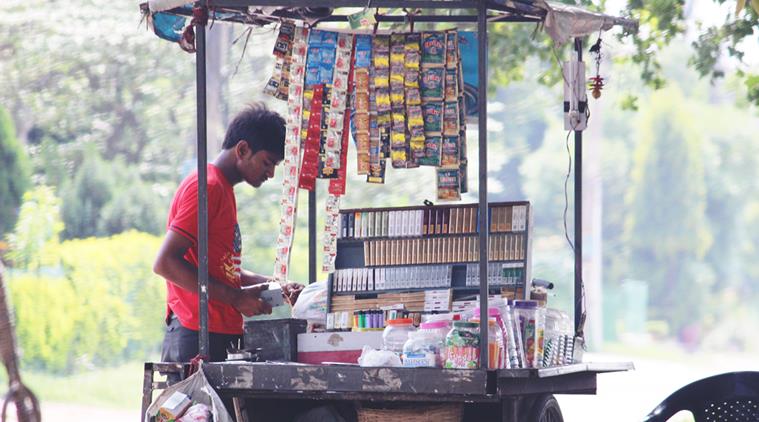 Tobacco usage is nearly 13.7 per cent in Chandigarh shows survey. (Representational)
Tobacco usage is nearly 13.7 per cent in Chandigarh shows survey. (Representational)
The prevalence of tobacco usage in any form is 13.7 per cent in Chandigarh, finds the Global Adult Tobacco Survey 2 (GATS 2), which was released by the Union Ministry of Health and Family Welfare earlier this week.
The national prevalence of tobacco use, as per the survey, is 28.6 per cent. GATS 2, a household survey of persons aged 15 or above, was carried out in all the 30 states and two Union Territories of Chandigarh and Puducherry.
The survey report says that the sample size taken for the survey in Chandigarh was 2,500, which comprised 1,000 men and 1,500 women. One individual was randomly chosen from each selected household to participate in the survey, for which the data collection was carried out during August 2016 – February 2017.
The survey has found that the prevalence of tobacco use in Chandigarh is 13.7 per cent, which is more than Punjab’s 13.4 per cent. Out of 13.7 per cent of tobacco users, 23.3 per cent are men and 1.7 per cent are women.
As per the survey report, out of the total tobacco users, 7.6 per cent are those who smoked only, 4.3 per cent people used tobacco but without smoking, and 1.8 per cent were those who smoked and also used tobacco without smoking.
Chandigarh, according to GATS 2, has seen a decline in the tobacco use as compared to GATS 1 survey which was conducted in 2009-10. The tobacco use prevalence in 2009-10 in Chandigarh was 14.3 per cent. For tobacco smoking, the percentage was 11 in GATS 1, and in 2016-17 it came down to 9.
The use of smokeless tobacco prevalence, however, has increased. In 2009-10, the percentage was 5.4 in the city which has increased to 6.1 in 2016-17.
Doctors maintain that awareness is required to bring the prevalence further down. “It is good that we don’t have so much of prevalence of tobacco in our city. More awareness and implementation of laws is required so that tobacco usage is further brought down,” said Dr D Behera, from the department of pulmonary medicine at PGI.
“City residents shouldn’t feel happy that we have prevalence low than national average. We should make efforts so that we take it to zero,” said Dr Rajesh Kumar, head of the school of public health, PGI. “Chandigarh is an educated city. People have to understand that using tobacco is harmful for health.”
The report has also provided details about prevalence of tobacco use among pregnant women. In Chandigarh, 1.1 per cent pregnant women used tobacco of any type.
The survey has found that maximum people (57.5 per cent) in Chandigarh started tobacco usage when they were in the age group of 20-34 years and 12.9 per cent were those who initiated tobacco in the age group of less than 15 years. The tobacco initiation for the age group between 15-17 years was 19.8 per cent while for 18-19 years, it was 9.9 per cent. The mean age for Chandigarh was 18.9 per cent.
Child counsellers in Chandigarh say children start taking tobacco (mostly smoking) by following their peers. “The school authorities need to ensure that there is no sale of tobacco products around the school premises. We have seen children start taking tobacco products after getting inspiration from their friends,” Sunita Kapoor, a senior counsellor at a government school in Chandigarh, told Chandigarh Newsline.
She said that parents also have a role to play to ensure children don’t take any form of tobacco. “If parents find that their child is smoking, he or she should be immediately provided medical intervention,” said Kapoor. According to the report, percentage of current tobacco smokers in Chandigarh is 9.4. The national percentage is 10.7, as per the report.
The GATS survey has also revealed that out of total 9.4 per cent current smokers, 3.5 per cent were those who smoked “any cigarette” while 6.4 per cent smoked bidi.
According to the report, the percentage of those people who made an attempt to quit smoking was 45 per cent.
About the average monthly expenditure incurred by daily smokers of manufactured cigarette and bidi by states/UTs, the survey has found in Chandigarh the average monthly expenditure was Rs 1,290.3 for cigarettes and Rs 139.4 for bidis. The national monthly expenditure, as per the report, is Rs 1,192.5 for cigarettes and Rs 284.1 for bidis.